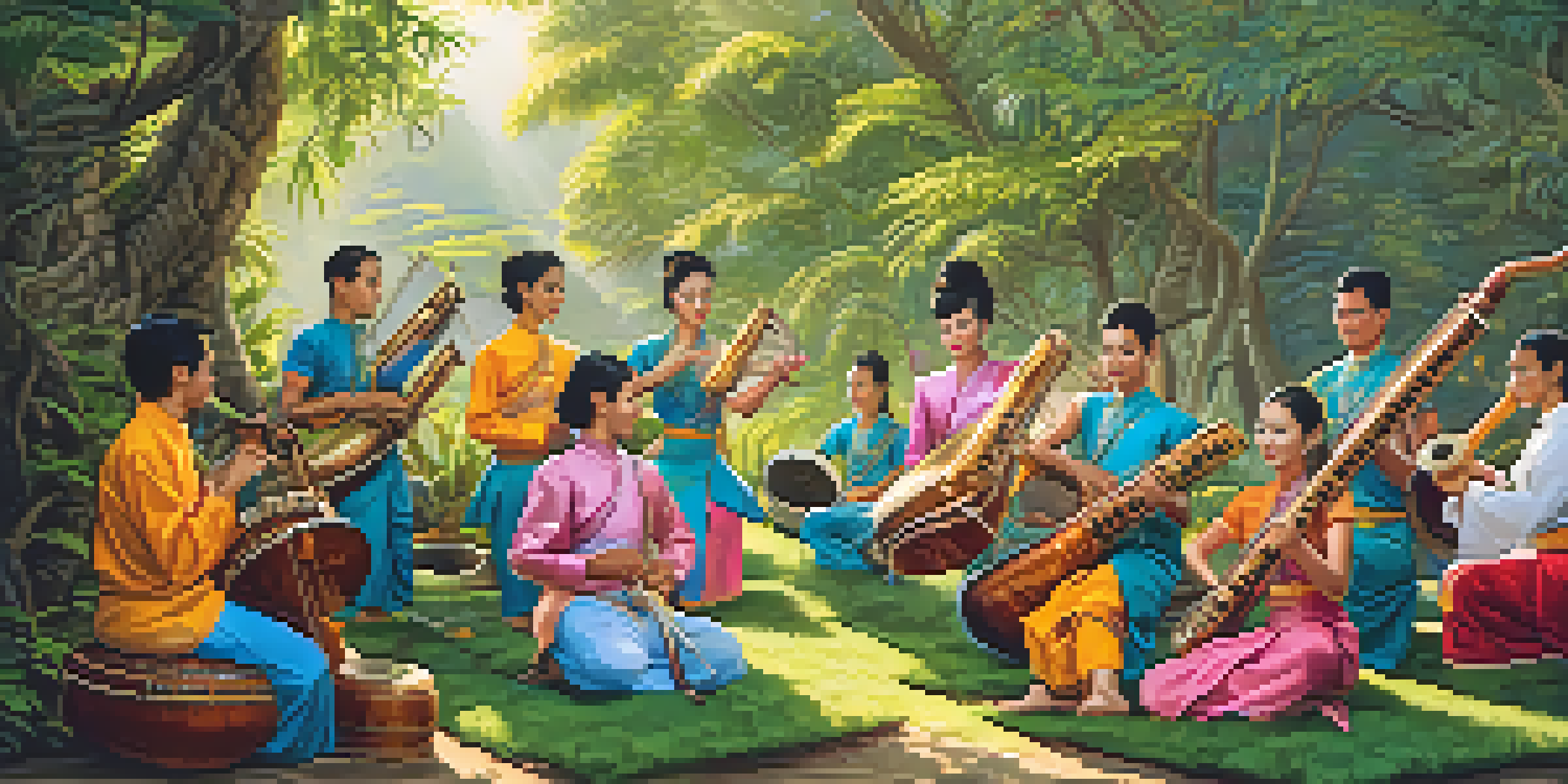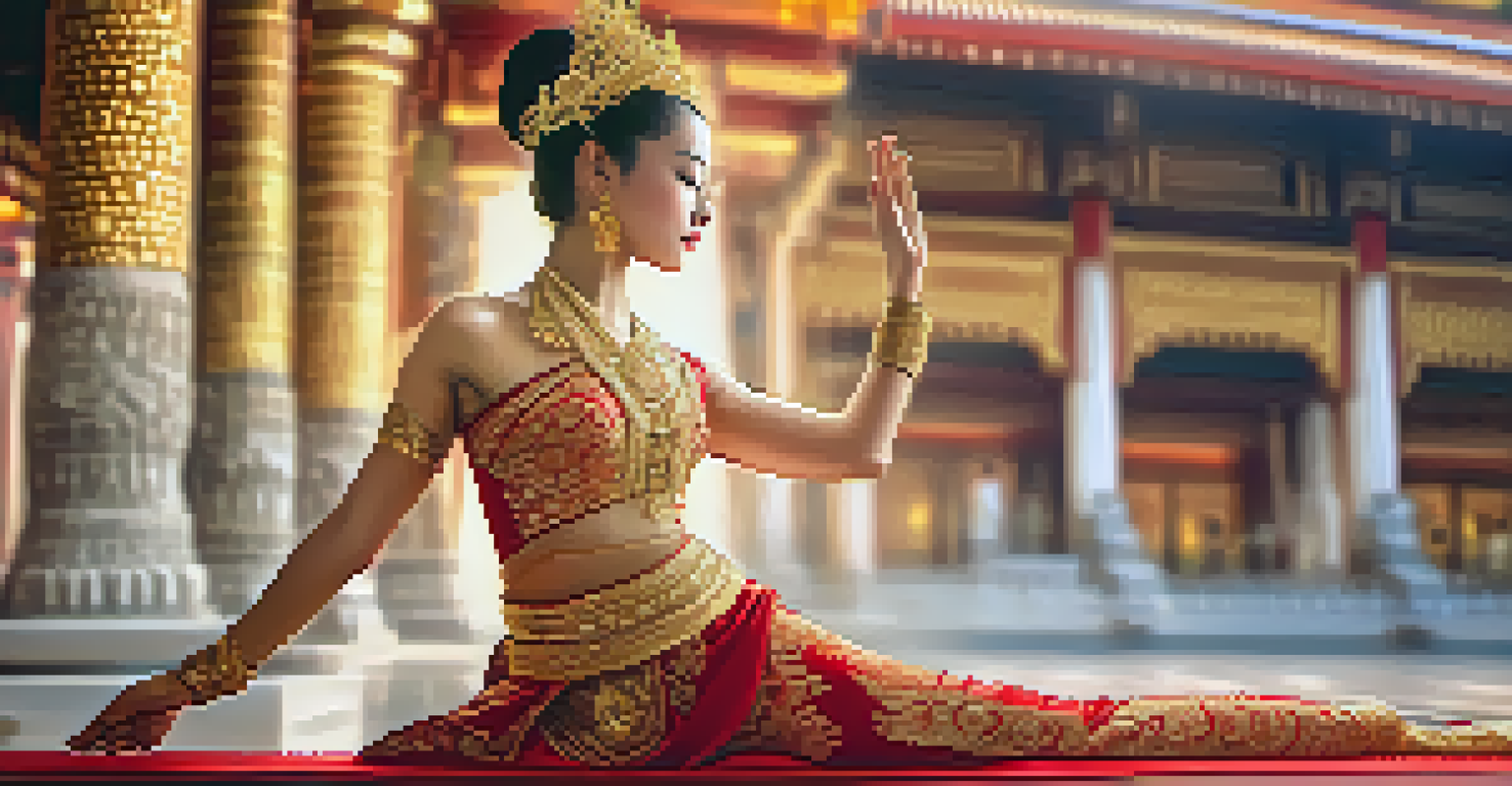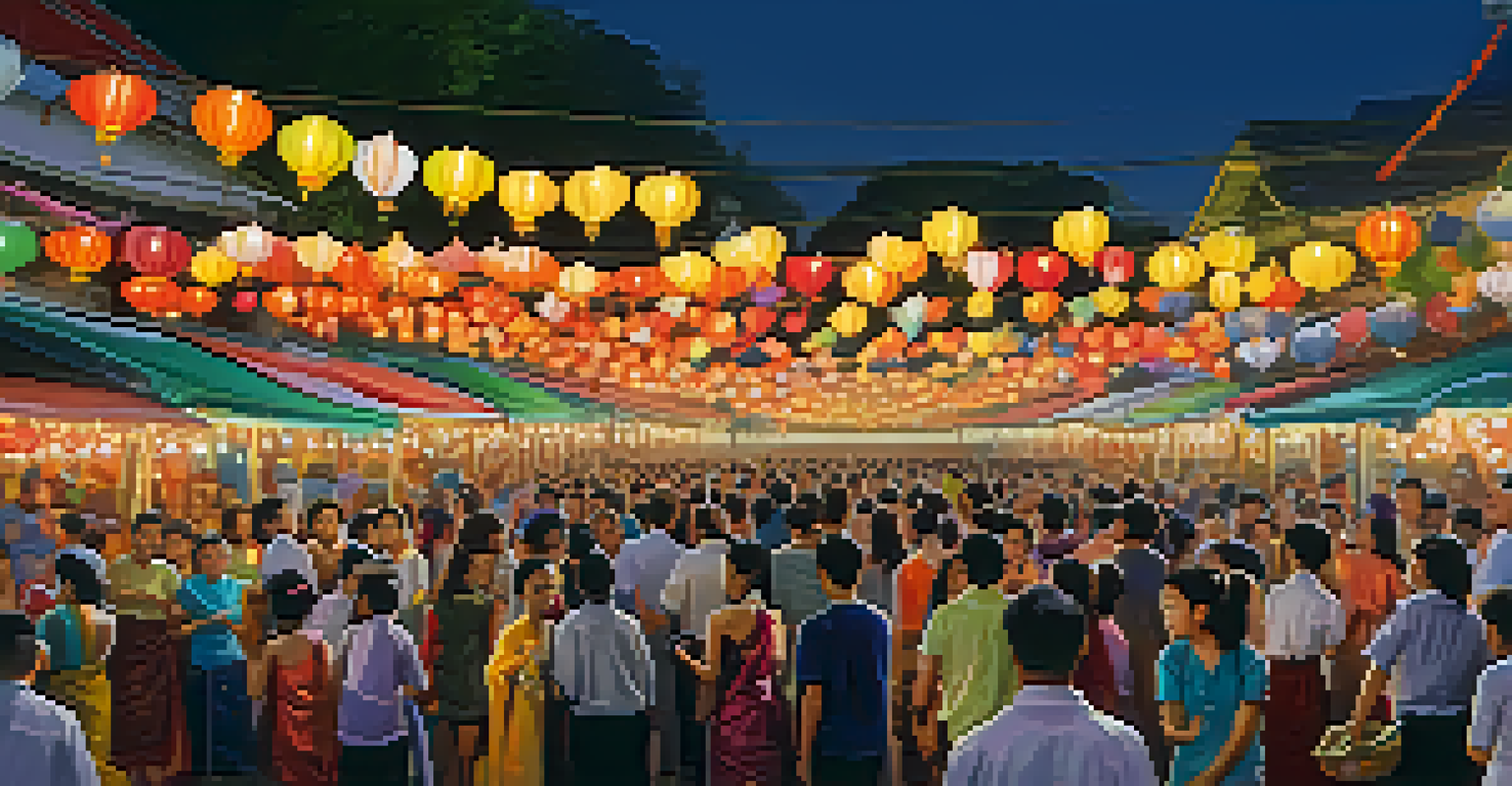Exploring the Rich Heritage of Traditional Thai Music and Dance

The Essence of Traditional Thai Music
Traditional Thai music is deeply intertwined with the country's history and culture. It serves not only as entertainment but also as a means of storytelling, capturing the essence of Thai life. The music often employs unique instruments like the khim, a hammered dulcimer, and the ranat ek, a xylophone-like instrument, each adding to the rich tapestry of sound.
Music is the shorthand of emotion.
What makes Thai music particularly fascinating is its use of scales and modes that differ from Western music. The pentatonic scale is prevalent, giving Thai music its distinct tonal quality. This scale creates a soothing, melodic experience that resonates with listeners, transporting them to the heart of Thailand.
Moreover, traditional Thai music is often performed during festivals and ceremonies, enhancing the cultural experience. It accompanies various forms of dance, reflecting the harmony between music and movement that is central to Thai artistic expression.
The Role of Dance in Thai Culture
Dance in Thailand is more than just an art form; it's a way to communicate stories and emotions. Each dance style, whether it's the graceful movements of classical dance or the lively beats of folk dance, carries its own significance and history. This connection to storytelling makes dance an integral part of Thai heritage.

For instance, the traditional Khon dance tells tales from the Ramakien, the Thai version of the Ramayana. Dancers wear elaborate costumes and masks, adding visual splendor to the performance. The combination of music, dance, and narrative creates a captivating experience that transports audiences to another realm.
Thai Music Reflects Cultural Heritage
Traditional Thai music intertwines history and culture, serving as a storytelling medium that captivates audiences.
Moreover, dance serves as a means of preserving cultural identity. By passing down these traditions through generations, Thailand ensures that its rich history and values continue to thrive in contemporary society.
Instruments That Define Thai Music
Thai music is characterized by its unique instruments, each contributing to the overall soundscape. Instruments like the pi phat ensemble, which includes drums and various wind and percussion instruments, create a dynamic and vibrant musical experience. The interplay between these instruments is essential for expressing the emotional depth of the performance.
Dance is the hidden language of the soul.
The ranat ek and ranat thum, both types of xylophones, play a crucial role in setting the melodic foundation. Their wooden tones resonate beautifully and are often complemented by the soft sounds of the khim. Each instrument has its place in the ensemble, working together to create a harmonious blend.
Moreover, traditional Thai instruments are often crafted using time-honored techniques, adding to their cultural significance. The craftsmanship involved in creating these instruments reflects the dedication and artistry that is integral to Thai music.
The Influence of Religion on Thai Arts
Religion, particularly Buddhism, plays a significant role in shaping Thai music and dance. Many performances are linked to spiritual beliefs and rituals, serving as offerings to deities and spirits. This connection adds layers of meaning to the artistic expressions, making them sacred as well as entertaining.
For instance, dance rituals are often performed during temple festivals to honor the Buddha and seek blessings. The movements are not just for show; they are imbued with spiritual significance, reflecting the dancers' devotion. This intertwining of faith and art creates a profound experience for both performers and audiences.
Dance as a Storytelling Medium
Thai dance communicates stories and emotions, preserving cultural identity while showcasing the rich heritage of the nation.
Furthermore, the themes present in Thai music often draw from Buddhist teachings, exploring concepts such as impermanence and compassion. This spiritual dimension enriches the cultural landscape of Thailand, providing a deeper understanding of its artistic expressions.
Regional Variations in Thai Music and Dance
Thailand's diverse geography and cultures give rise to various regional styles of music and dance. Each region boasts its own unique traditions, instruments, and performance styles, reflecting the local culture and history. This rich diversity allows for a vibrant tapestry of artistic expression throughout the country.
For example, the northeastern region, or Isaan, is known for its lively mor lam music, characterized by its use of the khaen, a traditional bamboo mouth organ. In contrast, southern Thailand showcases the mesmerizing khon dance, which often features intricate movements and elaborate costumes. Each style tells a story, showcasing the local way of life.
These regional variations not only highlight the creativity of Thai artists but also foster a sense of pride in local heritage. As people explore different styles, they gain a deeper appreciation for the rich cultural landscape of Thailand.
The Revival of Traditional Thai Arts
In recent years, there has been a resurgence of interest in traditional Thai music and dance, with efforts to preserve these art forms for future generations. Cultural organizations and schools are now actively promoting traditional arts, ensuring that they remain a vital part of Thai identity. This revival is not just about preservation; it’s about innovation as well.
Artists are blending traditional elements with contemporary styles, creating new forms of expression that appeal to younger audiences. This fusion keeps the art forms relevant and exciting while respecting their roots. For example, modern dance shows may incorporate traditional Thai movements, offering a fresh perspective on age-old practices.
Revival of Traditional Arts
There is a growing interest in traditional Thai music and dance, blending innovation with heritage to keep these art forms alive.
Community events and festivals celebrating traditional music and dance are also on the rise, drawing both locals and tourists. These gatherings provide a platform for artists to showcase their talents, fostering a sense of community and cultural pride.
Experiencing Thai Music and Dance Today
Experiencing traditional Thai music and dance today can be as simple as attending a local festival or performance. Many cities, especially popular tourist destinations, host regular shows that give visitors a taste of Thailand's rich artistic heritage. These performances often showcase a variety of styles, offering a comprehensive view of the country's traditions.
Additionally, workshops and classes are available for those interested in learning traditional dance or music. These hands-on experiences allow participants to connect with the culture on a deeper level, fostering a personal appreciation for these art forms. It's a wonderful way to immerse oneself in the rhythm and movement of Thai culture.

Moreover, with the rise of digital platforms, traditional Thai music and dance are now more accessible than ever. Online performances, tutorials, and documentaries allow a global audience to experience the beauty of these art forms, ensuring that the rich heritage of Thailand continues to inspire people worldwide.